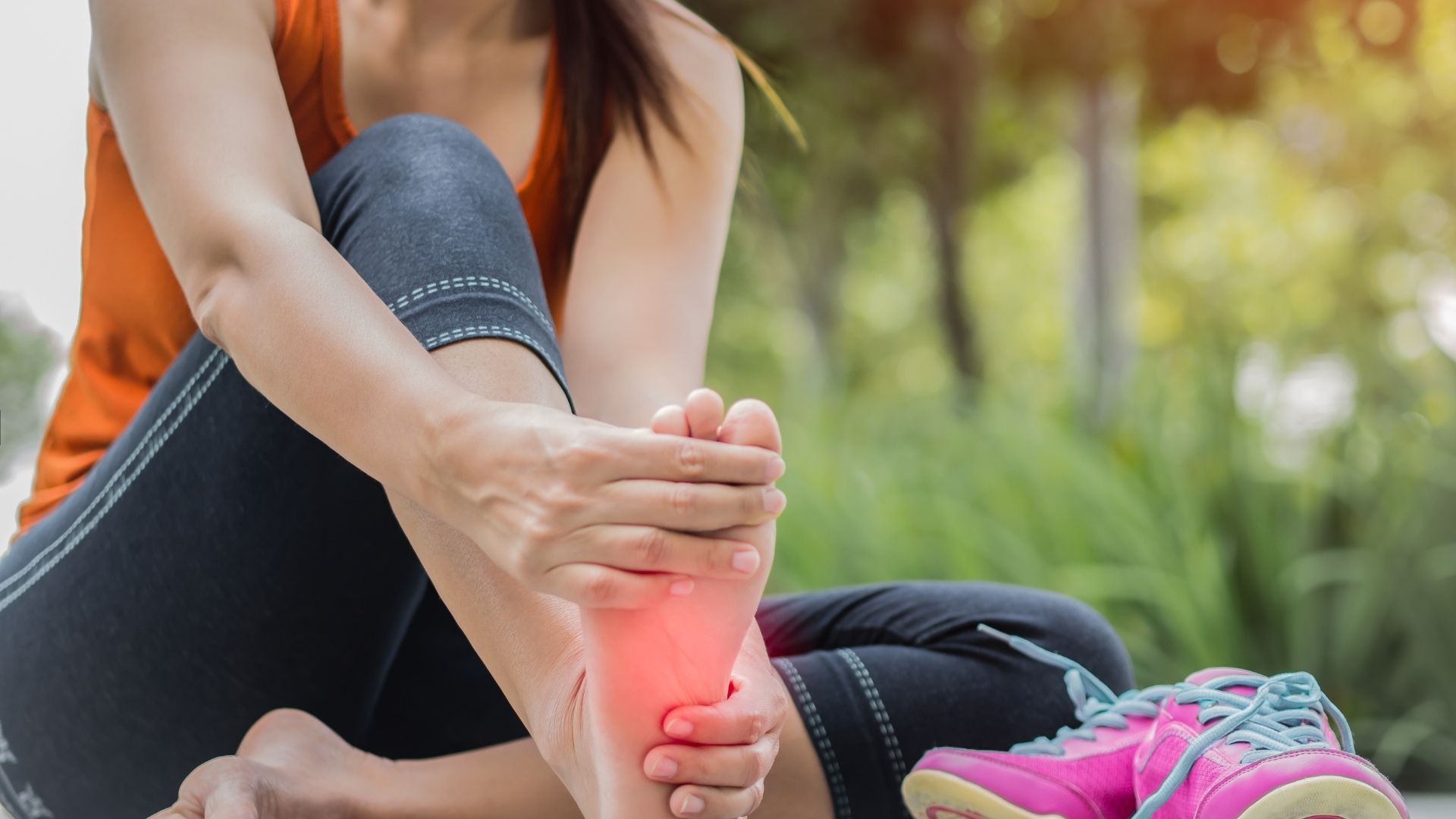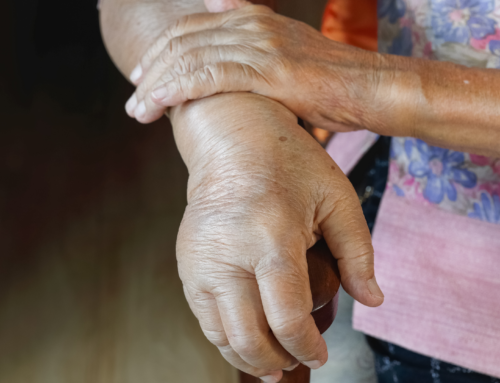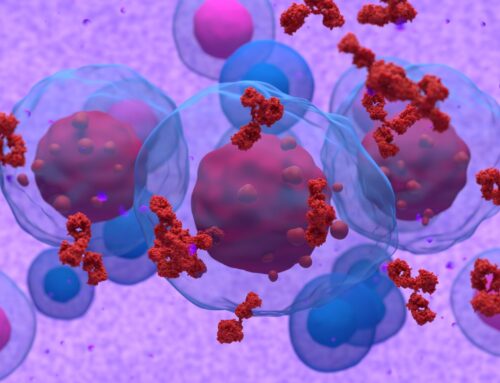Our feet do so much for us. They take us places. They ground us. But we likely don’t think about them very much until they hurt. Foot pain is a common occurrence that left untreated can lead to permanent structural changes and disability.
Injury, overuse or other conditions can cause inflammation to any of the areas of the foot. It is estimated that 75 percent of Canadians will experience foot problems of varying severity at one point in their life.[i] In this article, we explore the common types and causes of foot pain, discuss the effect of footwear on biomechanics, and how physiotherapy can help assess and treat foot conditions.
Common Types & Areas for Foot Pain
The foot is one of the most complex parts of the body consisting of 26 bones, 33 joints, 107 ligaments and 19 muscles and tendons. The foot also contains more nerve endings per square centimeter than any other part of the body.[ii]
Injury, overuse or other conditions can cause inflammation to any of the areas of the foot. To get the right treatment, you need to know the problem. Causes of foot pain can vary depending on location of foot pain. Some common areas and potential causes of foot pain are:
Heel Pain
The heel plays an important role in supporting the arch of the foot and in absorbing the shock and stress of walking and running as your foot touches the ground during these activities. The heel also provides the insertion point for the strongest tendon in the body, the Achilles tendon, which acts to flex and extend the ankle joint.
Common causes of heel pain include:
Achilles tendonitis is an inflammation due to overuse of the muscle that connects the calf to the heel bone. This condition often occurs in runners who suddenly increase the intensity or duration of their runs. When treated early, this condition can be easily treated however if left untreated further tearing or rupture of the tendon can occur.
Heel spurs are calcium deposits that builds up usually on the bottom of the heel due to overuse. This overuse can be due to strain on the tissues due to repetitive activities, overweight individuals, those with arthritis or due to certain gait abnormalities, such as overpronation.
Bursitis is an inflammation of the fluid filled sac at the back of the heel. Bursa act as a cushion and lubricant between tendons or muscles sliding over bones. This condition can be caused by overtraining (sudden increase in intensity of exercise), poorly fitting shoes, foot deformities that cause increased pressure in the area as well as types of arthritis including rheumatoid and gout.
Arch Pain
The foot has three arches (the medial and lateral longitudinal and transverse arch) that are formed by the tarsal and metatarsal bones of the foot and supported by the muscles and ligaments of the foot. The arches shape is designed as a spring and acts to bear the weight of the body in standing and to absorb shock with walking. The shape of the arch contributes to the flexibility of the foot as well as the pressure distribution.
Common causes of foot arch pain include:
Plantar fasciitis is the inflammation of a thick band of tissue that connects the heel to the front of your foot. Plantar fasciitis is considered a degenerative disorder, meaning your fascia starts healthy and gets injured over time, possibly due to repetitive strain or trauma. For example, runners are at an increased risk of developing plantar fasciitis due to prolonged periods of high impact through the feet.
The best time to seek advice is if symptoms lasts longer than a few days. A physiotherapist can assess your foot and ankle structure, strength, mobility, and tissue length to determine if you have any dysfunction before developing a customized plantar fasciitis pain management program.
Stress fractures are small cracks in the bone caused by overuse and repetitive activity such as running. They occur due to an imbalance of bone formation and bone reabsorption due to this repetitive loading.[iii] The second metatarsal is one of the more common areas of stress fractures occurring more in women than men.[iv]
Forefoot Pain & Toe Pain
The forefoot and toes are important during the push off or propulsion phases of gait, moving the body forward. The forefoot also acts to balance the body during static standing and movement.
Common causes of forefoot pain and toe pain include:
Metatarsalgia is pain and inflammation that develops in the ball of the foot typically due to running, jumping or high impact sports. This condition can also occur from other foot deformities such as hammer toes or bunions or from footwear being too loose or too tight.
Morton’s neuroma is a painful condition that affects the ball of the foot between the metatarsal bones. It results from the thickening of leading to irritation or compression of the nerve. This can produce burning, numbness or tingling and other sensory symptoms to the toes.
Sesamoiditis occurs when the tendons around tiny bones at the foot (sesamoid bones) become inflamed due to overuse and repetitive impact. This condition is particularly common in dancers, joggers, people who have high arches, people who have bunions or who wear high heels.[v]
The Effect of Footwear on Foot Biomechanics
The foot and lower leg biomechanics alter greatly depending on the type of footwear. High heels have been shown to greatly alter gait by placing greater stress on the low back and toes, shortening the calf muscle, enforcing an unstable gait pattern and leading to increased energy consumption with walking.[vi]
A pointed, or narrow toe box can also lead to foot problems. This leads to a cramping of the toes and increased pressure in the forefoot which can result in metatarsalgia, callus formation and hammer toes.[vii]
Flip flops are also a common culprit of foot pain. Walking with flip flops can lead to heel pain, overuse injuries of muscles and cause flat feet later in life.[viii]
Foot Pain Physiotherapy
Physiotherapists play an integral role in the management of foot pain. At Propel Physiotherapy our experienced and knowledgeable therapists will provide a comprehensive assessment of your foot pain. This assessment can include postural assessment, gait analysis (determining the positioning of the foot through the different phases of the gait cycle), assessment of joint mobility, strength assessment and testing to determine any muscle tightness that could be leading to foot pain.
Our therapists provide complete treatment that could include manual therapy, exercise prescription, orthotics referral and use of modalities such as shock wave therapy and ultrasound. Don’t let your foot pain slow you down!
References
[i] Foot Facts, Ontario Society of Chiropodists
[ii] Foot Facts, Ontario Society of Chiropodists
[iii] Maffulli N, Longo UG, Denaro V. Femoral Neck Stress Fractures. Operative Techniques in Sports Medicine. 2009;17:90-93.
[iv] Queen RM, Abbey AN, Chuckpaiwong B, Nunley JN. Plantar Loading Comparisons Between Women With a History of Second Metatarsal Stress Fractures and Normal Controls. The American Journal of Sports Medicine. 2009;37(2):390-395.
[v] Whitney K, DPM, Temple University School of Podiatric Medicine. Sesamoiditis
[vi] Lee CM, Jeong E, Freivalds A. Biomechanical effects of wearing high-heeled shoes. Int J Ind Ergonom. 2001; 28(6). Accessed 26 July 2019
[vii] Branthwaite H, Chockalingam N, Greenhalgh A. The effect of shoe toe box shape and volume on forefoot interdigital and plantar pressures in healthy females. J Foot Ankle Res.2013;28 (6). Accessed 26 July 2019.
[viii] Price C, Andrejevas V, Findlow AH,Graham-Smith P,Jones R., Does flip-flop style footwear modify ankle biomechanics and foot loading patterns?, Journal of Foot and Ankle Research 2014; 7:40. Accessed 26 July 2019.
Written by

















